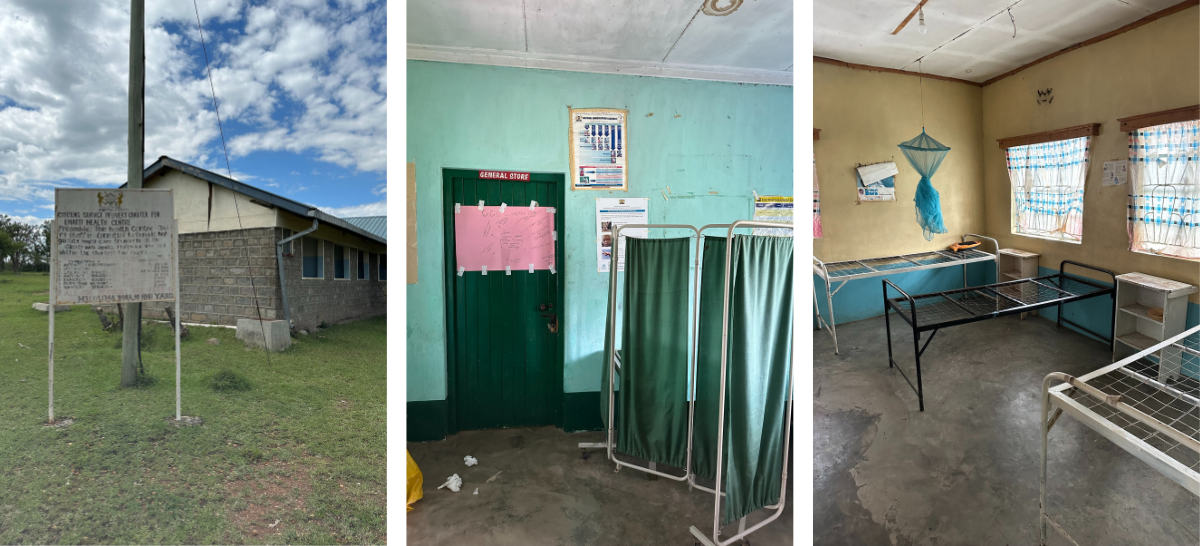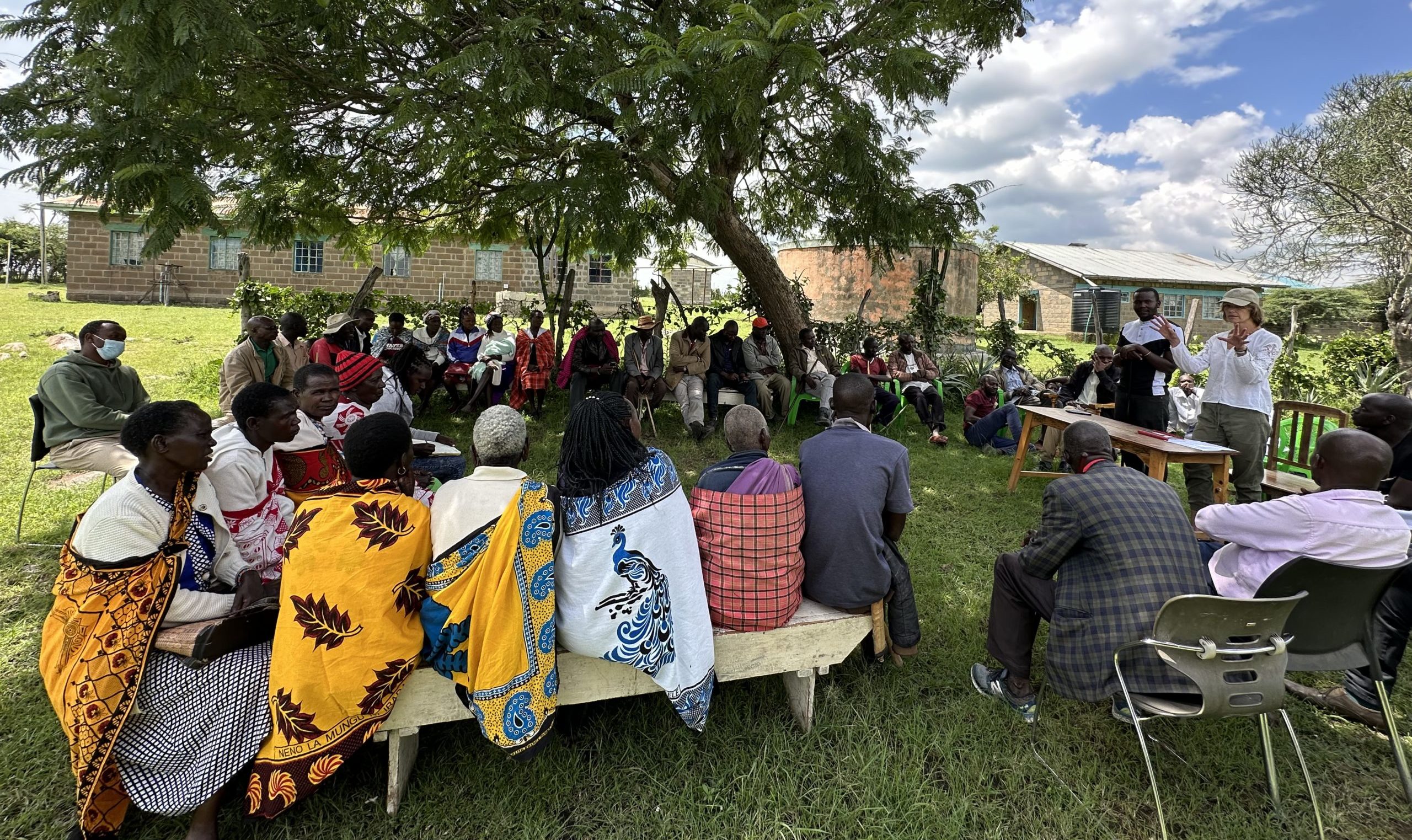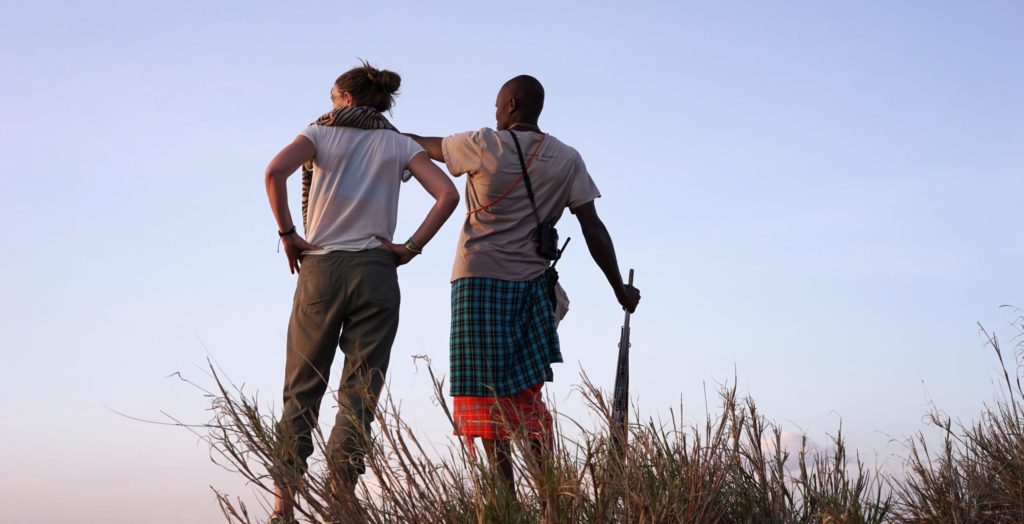Paul Herbertson catches up with Dr Laura Marshall-Andrews, GP practitioner and author of What Seems to be the Problem? (a memoir about her pioneering approach to frontline medical care), and learns more about her latest project to raise funds for the Emarti Health Clinic based in the Maasai Mara in Kenya.
First off, tell us a little about yourself. Who are you, what do you do, and how are you connected to Wild Philanthropy and Africa?
I am a GP based in Brighton in the UK. Eleven years ago, I established an integrative medicine NHS clinic. I first visited Africa when I was sixteen to work on an agricultural project in the Kalahari desert. I fell completely in love with the continent and have been travelling there with my husband (Will Jones of Wild Philanthropy) and family ever since. Eight years ago, Will and I purchased a small piece of land near the Maasai Mara in Kenya where we now have a family cottage. We try to spend as much of the year as possible out there, which has allowed me to get more involved in and connect with the community, one being the local clinic.
What inspired you to organise the walk? Can you share the story behind it and tell us who the funds will be benefiting? What are its goals?
The Emarti clinic is one of the few healthcare clinics serving communities in the Greater Maasai Mara area. It’s had very little support for many years and is in a poor state of repair. Electricity is intermittent and the water supply is poor. Mothers often give birth using the light of a mobile phone. There is scant equipment and the building has received no maintenance in years. Earlier this year a young man, Benjamin Kipos Nkaulo, died of sepsis in the village. This, among many other incidents, compelled me to raise funds to help improve the medical care for the local people, who are mostly from the Maasai community.
I have been working with an American radiologist who wants to establish a mobile diagnostic unit, which would also serve the wider area and enable access to diagnostics for people living in more remote areas. It would include an MRI scanner, x-ray, ultrasound and basic blood and urine testing equipment — an absolute game-changer in helping people access critical healthcare. Part of the funds raised from the walk will also go towards providing reliable clean water and power supply to the clinic, and essential equipment and renovations to the building.
See my assessment for a more detailed report and outline of the proposed needs for the clinic.

Can you share some details about the walk? Where will it take place and how long is the planned route? Also, is anyone joining you?
Last year, I met Sally Kenyon on a ‘Murmuration’ course in the Mara. Sally lives in Zanzibar and has strong connections with a village called Lambapuli on the Maasai Steppe in northeastern Tanzania. When thinking about how to raise money for the clinic, the idea of the walk came to mind, beginning the journey from her village in Tanzania and ending it back home in the Mara at the Emarti clinic. Along with a local opinion leader and guide Just’us Lekishon, who is joining me on the walk, we started on a plan. We will begin the journey in Lembapuli and walk up the Maasai streams across the Maasai Steppe, around Lake Natron passing Ol Doinyo Lengai (The mountain of God) and into the Loita Hills finishing in the Maasai Mara. This is about 770km – 800km and we expect it to take about a month if we walk around 25km a day.
Why walking? Is there a special connection between the activity and the purpose of the fundraiser, or is there simply something more personal about the act of walking? Or both of the above?
I’d say a bit of both. Walking is a powerful form of exercise with multiple proven benefits mentally and physically. It is also known to be an extremely effective healing activity. Along with its meditative properties, walking has allowed me to connect deeper with landscapes and people; whether it’s a challenging hike or a simple walk in a park to catch up with a friend. There is a kind of awakening quality about taking a journey by foot; a primal pastime, a subtle conversation facilitator and a reminder to slow down and notice the smaller details.
On the other hand, walking for the Maasai is a way of life. The Maasai are a semi-nomadic tribe, with the warriors often covering long distances (sometimes up to 50 miles a day) across vast areas as they move with the herding movements of their livestock. The Maasai have a deep connection with the environment and have traversed their homelands by foot for centuries.

I know you’re interested in alternative/holistic approaches to health and wellbeing. How does the walk tie in with these interests? Does it double up as a field study of sorts?
I have always had an interest in different approaches to life and health, and it was in 1988 when I arrived back from Botswana that I pursued an IB in Anthropology. I believe whilst we have gained a lot in our super convenient affluent societies, I also think we have paid a heavy price for this. I sense that we have forgotten some of the deepest, most joyful elements of being human. In many ways, we have become disconnected from the natural environment and from being a part of a community. I want to see what we can learn from people who still understand what it means to live closer to nature and community.
During this walk, I am hoping to explore and document some of the health beliefs and ancient wisdom of the Maasai tribe, which are so closely tied to how they continue to keep their culture alive and vibrant in today’s climate. Currently, the Maasai face many issues and I aim to understand and highlight some of these along the journey. I am hoping to pioneer a way of practising medicine, finding new ways to care which better incorporate local medical beliefs and practices.
Thank you, Laura. It’s been a delight and super informative. Last thing before letting you go: How can our readers get involved and show their support?
For anyone wanting to get involved, please visit the JustGiving page to donate or to follow along on the journey.
All donations for this project will be managed and distributed by Wild Philanthropy. Please help spread the word by sharing with friends and family and get in touch with Paul Herbertson with any questions.
